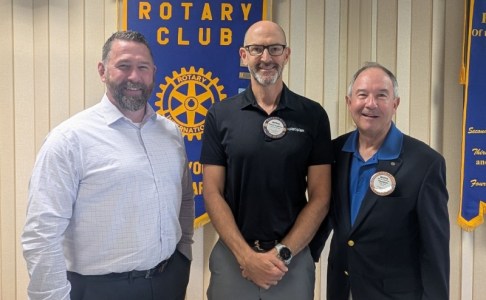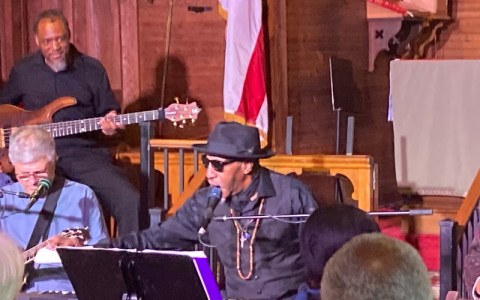Celebrating Tryon’s founding mothers
Published 10:00 pm Wednesday, February 4, 2015
If you’ve ever been to the Tryon Fine Arts Center–and you should all be nodding your head now—then you’ve likely seen the portrait of a woman hung high on the wall in the center of the lobby. TFAC’s director, Marianne Carruth, proudly pointed the painting out to me on a recent visit.
The woman in the painting is Violet Parish-Watson, and her bequest of $25,000 (to be matched by public funds) in 1964 prompted the Tryon Little Theater, the Tryon Concert Association, Tryon Crafts, the Chamber of Commerce, and many generous individuals to combine their talents and pocketbooks to build the Tryon Fine Arts Center, which opened in 1969.
Mrs. Parish-Watson’s stipulation for matching funds brought Tryon’s various arts organizations together with a common goal, and without her generosity the Tryon Fine Arts Center wouldn’t be standing today.
Trending
Mrs. Parish-Watson was the daughter of another important woman in Tryon’s history, writer and painter Emma Payne Erskine. Mrs. Erskine and her husband, Charles, moved their family to Tryon in 1895 (and lived in the beautiful Lynncote), where Mrs. Erskine became involved in the Lanier Library and donated the land to begin the Tryon Country Club in 1914.
The following year two women from Asheville, Miss Eleanor Vance and Miss Charlotte Yale, started a shop in Tryon to produce finely handcrafted furniture and wooden toys that became Tryon Toymakers and Woodcarvers. Miss Vance designed the first Morris—now Tryon’s mascot–which was actually named Eleanor at the time after Miss Vance (but apparently behind her back).
Tryon Toymakers and Woodcarvers master builder Meredith Lankford spent over a month building Eleanor—um, I mean Morris. Miss Lankford was only 17 years old.
This was an era when women were expected to stay at home and behave themselves, not go out and start golf courses and toy companies. Remember, these civic leaders couldn’t even vote.
Even the Tryon Garden Club members didn’t fit the mold of the times. In addition to their traditional floral arranging and gardening, these progressive women purchased Pearson’s Falls in 1931 and became the stewards of what would become a thriving business that brought tourists to Polk County for generations to come.
And if we want to take another step back further in time, we should also tip our hats to Tryon’s LeDuc sisters. Mary and Lucy LeDuc and their married sister Elizabeth Boardman began the Lanier Club in 1889 along with two other women with a goal to “procure a library for the town.”
Trending
Thirty-eight women between the ages of 14 and 75 attended the first meeting of the Lanier Club, and the first books were two volumes of poetry donated by Sidney Lanier’s widow.
A single bookcase was filled and placed in the Methodist Church, and when the club made its books available to the public in 1890, the Lanier Library was born.
Another generous Tryon woman, Miss Francis Wright, a transplant from Connecticut, donated half the money to purchase the lot on the corner of Chestnut and Melrose, and by 1905, the building we now enjoy as the beautiful and charming Lanier Library had been built.
By the way, by 1930 men were allowed to join the library, and now we let them in all the time.
If you’ve been paying attention to the dates in this very brief and casual history lesson disguised as a newspaper column, you’ve probably noted we have two important anniversaries in Tryon this year.
2015 marks the 100th anniversary for Tryon Toymakers and Woodcarvers, and the (gasp!) 125th anniversary for the Lanier Library, our oldest civic organization.
While you’re out there celebrating, remember neither of these entities would have been born without our forward-thinking, arts-and-literature-loving mothers of Tryon. Without their generosity and hard work, Tryon wouldn’t be what it is today, a charming little arts-centric town with a rich history that includes some very cool women.






